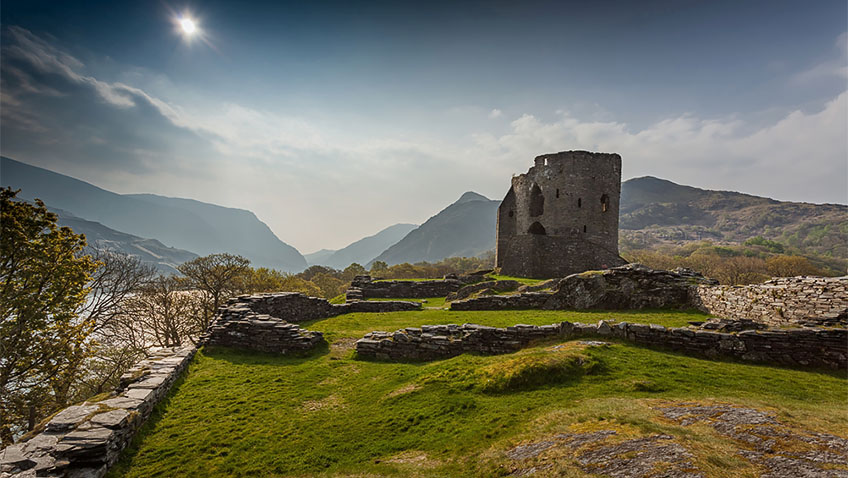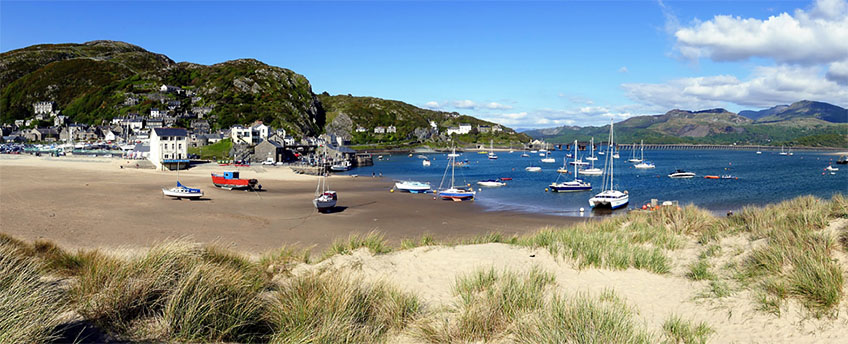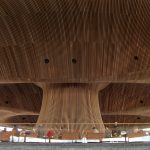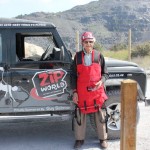Andrew Silk visits Snowdonia
What an amazing area of natural beauty! Covering some 823 square miles, Snowdonia is the largest National Park in Wales and the fourth largest in the UK after the magnificent Cairngorms, the wild and rugged Yorkshire Dales and the natural beauty and greenery of the Lake District.
It’s also home to Yr Wyddfa, the highest mountain in England and Wales, probably better known to us non-Welsh speakers as Snowdon. Its peak stands at 1,085 meters (that’s 3,560 feet) above sea level and on a clear day you can see Ireland. But Snowdon isn’t the only mountain in the National Park and in fact mountains cover some 52% of the whole of the park area. There are nine mountain ranges in total, with many of their peaks breaking the 3,000 feet barrier.
But you don’t just have to be a lover of mountains to visit Snowdonia; there is much more to keep you occupied whilst you are there. Want to find out more? Then read on!
Snowdonia has a varied landscape; there are lakes galore; it is punctuated by steep river gorges with an abundance of waterfalls and tumbling rivers. As one of the wettest places in the UK it has verdant and lush green valleys that you can explore; ancient woodlands full of mature trees; and a coastline that is punctuated by some of the nicest sandy beaches you will find anywhere in the country. In fact whatever your outdoor pleasure you’re sure to find something that will fulfill and satisfy your needs.
I recently found myself in the small town of Bala in the heart of the park on a short break, the reasons for which I will come onto later. Now I’ve been to Snowdonia on many occasions before, but given the size of the park there’s always more to see and do than you can fit into a short break – a good excuse to go back!
The thing that never ceases to amaze the visitor is that no matter what time of year you go, the mighty Snowdon itself is always imposing and majestic and is a must visit on everyone’s itinerary. If you do visit, go to the summit. There are really only two ways of getting there and that’s either on foot or by taking the train.
If you are considering walking then it’s fair to say that you need to be well equipped and a fairly experienced walker. Mountains can be fickle places; the terrain can be hard going and the weather unpredictable. Walking up Snowdon is relatively straightforward in terms of navigation as there are six designated routes to the summit, although you should always make sure you have a good map and compass with you should the weather “come in”, but it’s not straightforward in terms of terrain. There and back is a nine mile hike and it will take you most of the day, so if you are going to give it a go then be prepared, make sure you allow enough time and keep an eye on the local weather forecast.
You can always walk up and get the train back down but remember this is not always guaranteed. It’s dependent on there being space on the trains and the trains actually running (especially in bad weather conditions).
If you are not feeling so energetic then by all means just get the train; sit back, relax and enjoy the scenery as you ascend to the summit. The railway has been climbing the mountain since 1896 and it’s certainly a journey that you will remember. At the top you leave the carriage and then climb the few feet to the actual summit – the views are breathtaking but beware of the wind up there; it doesn’t half blow!
Barmouth beauty
As I’ve already mentioned, the beaches around this part of the country are simply beautiful, with lovely long stretches and fine sand and to walk on – what could be better! The small town of Barmouth is an absolute delight; a first ever visit for me, and a town that nestles “where the mountains meet the sea.”
It’s been a holiday resort for something like 150 years, but not in a tacky way. There’s something of a discrete, laid back atmosphere about the town. It’s compact, easy to get around, and in an absolute stunning location. You could quite easily base yourself there and take advantage of all that it has to offer – whether that’s the beach itself or something a little more physical like walking or cycling, or perhaps just sitting on the beach building sandcastles for the grand kids. Whatever you choose to do it’s well worth a visit – and let’s hope the weather is good as the sunsets are some of the best you will see in the UK!
Back to Bala
And so it’s back to Bala and the start of this story. Bala is located in what is known as the Welsh Lake District and is a small, historic market town sitting at the head of Lake Bala, full of cafes, pubs, restaurants and places to stay. A drive around the lake or a trip on the train that runs alongside it are highly recommended for the stunning scenery, but its main claim to fame is that it is the town where the largest Welsh cake in the world was made, as certified by the Guinness Book of Records, in 2014 on St David’s Day.
It’s a good a place as any to base yourself for a tour of the area, but it’s attraction for me wasn’t Lake Bala but another lake that lies above the town. Well, to be perfectly accurate, it’s not a lake but a man-made reservoir called Llyn Celyn, created in 1965 by damming the River Trywerlyn to much local opposition.
This reservoir now supplies much of the drinking water for the Chester and Liverpool areas but it also discharges water back into the river over natural rapids. The discharge of water is so reliable from the reservoir that just below it is now located the National White Water Rafting Centre, the whole reason for my visit!
And what a great way to spend a few hours, learning to navigate the rapids, or if you are of faint disposition, just sitting there watching the other idiots do it!
It’s just you, an instructor and five other adventure seekers in a sturdy raft hurtling down the river, and what an exhilarating experience it is. You follow a pre-determined course that you navigate four times in around two hours. The instructor gradually ramps up the experience as you go through the different runs; the first is quite gentle as the instructor takes it easy navigating the river, but by the fourth run you are fair game for a good soaking as you face into the full flow of the river in your raft.
If you don’t fancy it yourself, why not take the grandkids if they are old enough? It’s guaranteed that they will enjoy it, as will you enjoy watching them, that’s for sure!
A great place
What a great place to visit, with such diversity on offer there’s something to suit everybody’s tastes. Don’t worry, you don’t have to hurtle down a river in raft if you don’t want to or walk all the way up a big mountain, but I guarantee that if you do either of these things you will have a sense of satisfaction and achievement that you will remember for a long time!
For more information visit www.snowdonia.gov.wales or www.nationalwhitewatercentre.co.uk





